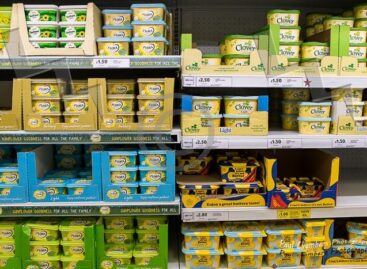Domestic chains enjoying an advantage on the Chinese battlefield (part 2.)
Why are Chinese retail chains successful in their battle against international chains? This was the question we discussed with Glen Murphy, director of the Chinese Nielsen subsidiary. The average income in China is astonishingly low by Hungarian standards. A construction worker earns HUF 40,000 in Shanghai, working ten hours a day. According to Dr. Fan Gang, director of the National Economic Research Institute, seven out of ten Chinese citizens earn less than USD 1,000 per year and rationing of food continued to exist until 1992. Retail chains target higher income consumers. Tomorrow’s positions are at stake in today’s competition, as a several hundred million strong middle class is expected to emerge, with substantial purchasing power. The present is often referred to as a “commercial revolution” by experts. Young Chinese beginning their careers now belong to the “one child per family” generation who had received unprecedented support from the government in education and enjoy incomes which earlier generations could only dream about. They are familiar with Western brands and consume vehemently, forming the primary target group for trade, but only account for 13 per cent of the population yet. Three cities, accounting for 7 per cent of the total urban population are the hottest centres for the food business in China at the moment: Shanghai, Beijing and Guangzhou. Per capita income in these cities is USD 2,000, totalling USD 82 billion per year. 29 “second rate” cities, generally regional centres, which account for 30 per cent of the urban population also offer favourable prospects for the food trade. Per capita income in these places is USD 1,250, totalling USD 200 billion of purchasing power. A further 251 cities, with per capita purchasing power of USD 750 represent 63 per cent of the urban population. 20 per cent of the total Chinese retail turnover is concentrated in Shanghai, which has a population of “only” 18 million By 2015, smaller cities, located mainly in the eastern region will become the hottest spots, while the battle for market positions in major cities will be over. Chinese owned chains hold very strong positions. Five out of the seven biggest retail chains are owned by Chinese companies, with the biggest named Brillance generating annual revenues of USD 10 billion. Size is not the secret behind their growth potential. Their stores are located in the most ideal places, perfectly adapted to the local environment, have excellent contacts and knowledge of the market, spend less on wages, hardware and decoration, enjoy substantial financial support from the state and make decisions more quickly and flexibly than their western competitors. Basket values are small, but purchases are frequent. Carrefour, Wal-Mart, RT Mart and Lotus (Tesco) all pursue aggressive expansion strategies, but local chains seem to be facing up to the challenge. According to a Nielsen survey, 43 per cent of Chinese consumers prefer domestic chains to foreign ones, while only 19 per cent prefer foreign chains.
Related news
Related news
Co-op uses AI to fight GBP 40m losses in the UK
British supermarket chain Co-op is using AI technology to detect…
Read more >Plant-based brands risk losing consumer interest, says Flora exec
Flora Food Group marketing director Ian Hepburn has warned that…
Read more >Albertsons Terminates Merger With Kroger
Albertsons has terminated its $25-billion (€23.7 billion) merger agreement with Kroger after…
Read more >





